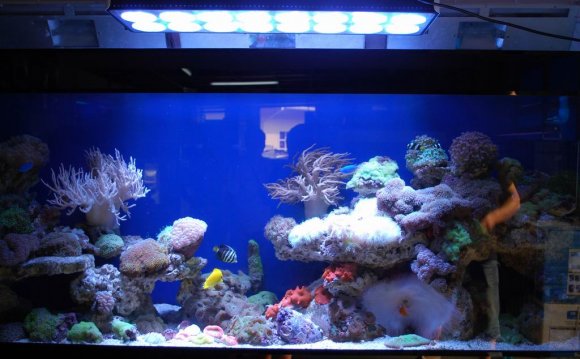
So you've set up a new fish tank and stocked it with a few fish to get it started. Standing back, you admire your work before frowning and moving that one decoration just an inch to the right. There. But something seems like it's missing: Earlier in the day, when you picked up your new fish, there was a tank of plants in the store.
Why Plants Are Important for Fish Tanks
Plants offer these benefits:
- They enhance an aquarium's look.
- Give fish a place to hide and rest.
- Provide food.
- Shelter fry and eggs.
- Increase oxygen content.
- Reduce harmful chemicals such as ammonia.
- Compete with algae.
Low-Maintenance Aquatic Plants
The real plants at the store did look pretty neat, better than some of the plastic ones, but you're still not sure you want to invest in something that complicated. Aren't plants hard to keep? Needy? Don't they rot and cloud up your tank? Couldn't they hurt the fish?
The answers to those questions are yes and no. Just like there are beginner fish that are hardy and undemanding, there are also beginner plants. Or, perhaps, a better term for them would be aquatic weeds, since beginner plants tend to grow quickly and are very hard to kill once they are settled into a tank.
Beginner plants are low-maintenance and grow well under less-than-ideal circumstances. These plants do well with low light and low Co2 levels and use your fish's waste as fertilizer. Because plants use Co2 to photosynthesize, they release oxygen into the water as a by-product. Oxygen is what fish breathe. Plants also use the ammonia, nitrite, and nitrate from fish waste, purifying the water and making it safe for fish.
Plants also have the added benefit of making your tank look more natural, giving shelter to your fish, and even providing a little snack for some fish, such as mollies and silver dollars. Plants also compete with algae for nutrients and light, making it harder for algae to grow in your tank. Plus, they are fairly cheap and a little goes a long way.
Floater plants do not leave the surface of the water. These plants have roots that dangle down into the water but do not bury in the substrate. They are extremely easy to grow and sometimes flower on top of the water.
Frogbit and duckweed are from the same family and look similar to aquatic clovers (little, clustered leaves). Duckweed plants are very small and multiple quickly. Most people do not want duckweed in their tank and acquire it as a hitchhiker. Duckweed is almost impossible to remove once introduced, but it does an excellent job of providing cover for fry, providing food, and sucking up nutrients. Frogbit is very similar but it is much larger and easier to remove.
Non-rooting plants have roots but the roots should not be buried in the substrate. For most of these plants, if you bury them, the plant will die because it cannot access the water column for nutrients and oxygen. These plants do best either wedged in place, weighted down, or tied to a decoration.
- Java ferns (Microsorum pteropus) have dark-green, thin, vertical leaves that grow out of dark, tangled roots. This plant actually roots itself to rocks or wood. It can grow quite tall, and given time, will fill a fifty-five gallon tank top-to-bottom. This plant propagates with little fernlets that grown along the mother plant's leaves. When the fernlets are fully developed they are released and float around until they find a spot to grow.
- Anubia is a family of plants that also prefer to anchor on decorations. Anubia nana is a small plant with several large, round leaves. There are many types of anubia, but all do well in low-light conditions and have broad leaves.
- Hornwort (Ceratophyllum demersum) is a native plant that does well in both coldwater and tropical tanks. It is a bunch plant that can either be floated at the top of the tank or wedged behind or under decor. It has rough, thin leaves. Hornwort grows very quickly and provides good cover for baby fish and eggs. It tends to grow upwards and pieces of the original plant break off to create a new plant.
- Anacharis (Egeria densa) has long, thin roots that dangle off the stem. The stems have dark green leaves that trail up like a little vine. Like hornwort, it can be floated or sunk to the bottom. Anacharis grows upwards and propagates by cutting. It is a great treat for goldfish, silver dollars, mollies, and other fish that require vegetation in their diet.
- Java moss (Vesicularia dubyana) is a dark green moss that spreads along the bottom of the tank. There are even reports of java moss "climbing" the bubbles coming off airstones and up the back of tank walls. To direct it, use black cotton thread or a rubber band to secure the plants to a decoration that you want covered. Java moss is especially good for danios and barbs which like to lay their eggs in the moss.
Rooting Plants
Rooting plants do best buried in the substrate. These plants have a variety of appearances, but most look similar to non-aquatic plants. Some even flower above water. These plants do best with 2-3 inches of substrate and lots of room to spread their roots.









